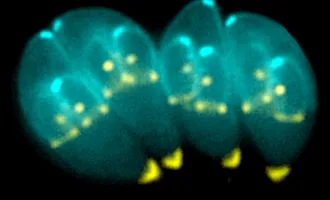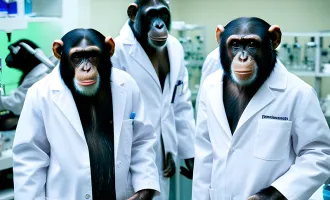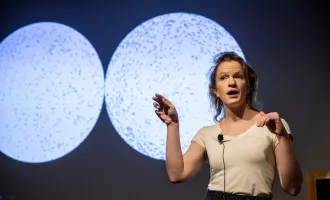This Date in UCSF History: Cloning Questions
Originally published in Synapse - The UCSF student newspaper on May 11, 1978. Immortality, Mankind’s oldest dream, that of conquering death itself to secure a place in the eternity of time. In his widely-publicized book, In His Image: The Cloning of a Man, author David Rorvik claims to have witnessed the dawn of the Age of Immortality.
Researchers at UCSF, however, strongly doubt Rorvik’s bold claim. Dr. Herbert Boyer, professor of biochemistry here and pioneer of recombinant DNA technology, flatly labels the book “a lot of bull, a complete hoax.”
The authoritative journal, Science, in a skeptical commentary on the book last month, attacked Rorvik’s scientific credentials and motivations, noting that he has no formal scientific training and stands to make hundreds of thousands of dollars from the “ploy.”
Surveying prominent scientists around the country, Science concluded with an editorial chuckle; “almost no one seriously thinks that experimentation in human cloning is taking place in this country.”
Why the denial?
Rorvik says that the denial of human cloning by the scientific community was to be expected. Scientists engaged in controversial research are uniformly fearful of increased public scrutiny of their experimental work, Rorvik argues, since it would entail even greater bureaucratic checks on their research freedom.
The nation’s scientists are purposely telling the public that cloning will not be possible for at least 25 years, and that the uproar over cloning is premature and unfounded, in order to protect themselves, according to Rorvik.
Although scientists such as Dr. Boyer’s claim that “the scientific community examines and continues to examine these issues openly,” other concerned researchers are not satisfied.
A public interest group and three scientists on the East Coast have filed suit in federal court to expedite a Freedom of Information Act request.
They are asking the National Institutes of Health, the National Science Foundation, the Departments of Agriculture and Defense, and the Central Intelligence Agency to disclose all information about grants involving cloning (in any species), test-tube fertilization of human eggs, genetic screening, and recombinant DNA technology.
The suit filers are not suggesting that the Rorvik book is true, but rather that we are so close to the realization of cloning that a public debate must begin immediately.
Technical limitations
Other scientists are content to dismiss the book on the grounds of its factual inaccuracies. Dr. Roger Peterson, a researcher in the radiobiology laboratory at UCSF, is thoroughly familiar with the scientific literature on nuclear transfer, from which Rorvik’s scenario is extrapolated.
Rorvik inaccurately ascribes important work in the field to the wrong researcher, according to Peterson, and misinterprets other key experiments to build his case for cloning.
“It is unrealistic to expect that the differentiated cell of an adult man or woman could be successfully used for cloning,” Peterson states.
And this is precisely what Rorvik maintains was done successfully by a group of scientists, working secretly, and lavishly funded by an eccentric West Coast millionaire named Max.
Researchers who doubt Rorvik base their skepticism on the sheer magnitude of the biological obstacles to be overcome if a clone is to be produced.
At this point, most successful cloning occurs when an immature, not fully differentiated frog cell nucleus is implanted in an enucleated frog cell.
The claim that an adult nucleus has been used successfully to clone an adult frog is widely disputed by reputable scientists.
Rorvik’s postulation that such a procedure has been done successfully in humans requires a considerable stretch of the imagination, according to the researchers.
Asked when a human clone could be expected to be “born” at UCSF, Peterson answered “that question is more difficult than ‘how soon can we cure cancer?’ The real question should be ‘is the nucleus of an adult human biologically capable of reverting to a state where it could support a human embryo within the time limit of days?’”
Political Implications
Whether In His Imageis fact or fiction is beside the point, in the view of many concerned scientists and sectors of the public.
The clamor for consumer participation in supposedly technical governmental regulatory actions has spilled over into the field of gene technology, and Rorvik’s book seems designed to stoke the fires of public discontent around such issues.
Congressman Paul G. Rogers of Florida feels that there should be an open Congressional hearing to lay the issues before the public.
UC Berkeley scientist Paul Segall believes that Rorvik is telling the truth and adds that cloning will make possible human life extension for this generation, with implications for space colonization also.
It its commentary, Science magazine adds as an afterthought: “Rorvik may see his book as some kind of political statement.”
This much, of course, was clear from the beginning. Both those who believe and those who disparage David Rorvik’s thesis agree on one thing.
Cloning will be here sooner or later, and it will surely provoke some profound navel-gazing about who we are as a human race and what we value about life itself.



